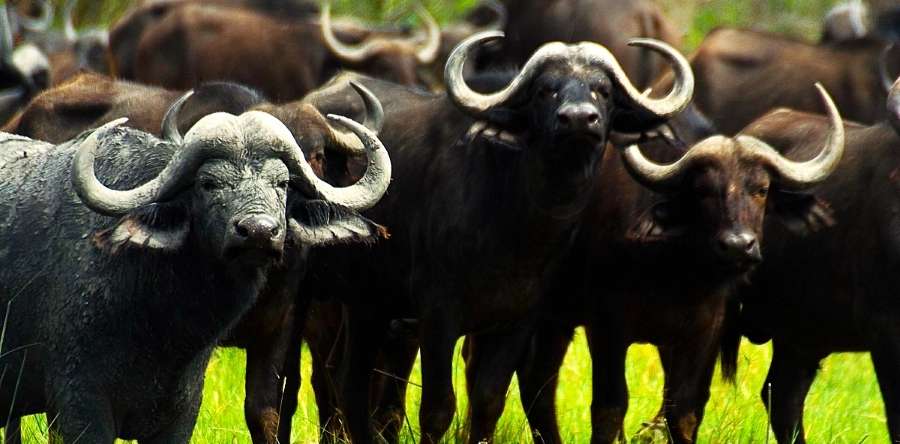New study from Ngorongoro Conservation Area glimpses into Human-Buffalo conflicts across Africa
A study conducted by researchers in the Ngorongoro Conservation Area is providing crucial insights into the reasons behind Human versus Cape buffalo confrontations occurring across the sub-Saharan region of the African continent.
The African or Cape buffalo (Syncerus caffer) is a formidable and aggressive species. It is present in most sub-Saharan African countries.
It is categorized as Near Threatened on the International Union for Conservation of Nature Red List, with a declining population.
The global estimate of the buffalo population is around 573,000 (among them 401,000 mature individuals), with a decline of 18 per cent between 1999 and 2014.
With 225,000 such animals, Tanzania has the highest number of buffaloes in Africa, according to the latest wildlife census.
There are about 400,000 adult buffalo in Africa, according to the International Union for Conservation of Nature (IUCN). Tanzania therefore has more than 50 percent of the continent’s population and accounts for 40 percent of the world’s buffaloes.
According to the report from Ngorongoro study, the Human-African buffalo conflict occurs as a result of increasing human populations, loss of wildlife habitat and land-use change.
This can lead to crop damage by buffaloes and subsequent confrontations with people, and poaching.
Interactions between humans and buffalo in Africa usually result in an estimated 200 human deaths annually.
The researchers said that highlighted the need to study human–African buffalo interactions, especially in densely populated ecosystems.
The study
The researchers conducted a semi-structured questionnaire-based survey of 131 households randomly selected in the Kambi ya Simba, Oldeani and Tloma villages surrounding the Ngorongoro Conservation Area in Arusha, Tanzania.
They found that resource competition was the main factor that ignited human-African buffalo conflict. During the wet season, the buffalo often damaged crops of maize, beans, wheat, peas and coffee.
The research results contained in the report ‘Human–African buffalo conflict: perceptions of damage, and mitigation strategies, in villages bordering Ngorongoro Conservation Area, Tanzania,’ was published in the journal Oryx in November 2024.
Farmers in the area usually used traditional mitigation approaches such as guarding farms, lighting fires, using torchlight and vocal and other auditory deterrents.
A local coffee estate had also erected electrified fencing around its plantation.
Fewer conflict incidents had been reported since 2016 when the fences were installed, as per the paper published by the researchers.
The researchers made a number of recommendations to minimize the conflict.
For instance, local communities should be involved in the development and application of mitigation methods and these should be implemented and modified, based on field tests.
They also suggested testing methods such as the use of chili bombs, drones and intense light torches, which have proved effective at mitigating conflict with elephants.
“Because of the prohibitive costs of these methods, we recommend forming communal guard groups in all affected villages, to share resources and implement combined training on how to use these tools,” the experts noted.
They also advised continuing efforts by wildlife conservation authorities to prevent local communities planting crops within the 500-metre buffer zone around the protected area boundary.
“Our findings demonstrate the impacts of human-African buffalo conflict on local communities and the importance of continuing human-African buffalo conflict monitoring to improve conservation action and increase the participation of the local community in conservation activities,” the experts concluded.
Buffaloes in Africa
The new wildlife census report from the Ministry of Natural Resources and Tourism through the Tanzania Wildlife Research Institute (TAWIRI), indicates that there were 225,000 cape buffaloes in Tanzania.

As it happens the Serengeti National Park, the home to wildebeests migration also has the highest number of Buffaloes whose population in the precinct reaches 69,075 such African buffaloes.
The Nyerere-Selous ecosystem comes second in the country with a total of 66,546 buffaloes, while the Katavi-Rukwa range was found to host 35,273 buffaloes and the Ruaha-Rungwa wilderness holds 20,911 Nyatis.
Tanzania has essentially four-times the number of buffaloes compared to South Africa.
South Africa comes second on the continent with a total of 46,000 buffaloes, followed by Mozambique in the third position with 45,000 buffaloes, while Kenya currently hosts 42,000 buffaloes and Zambia 41,000.



